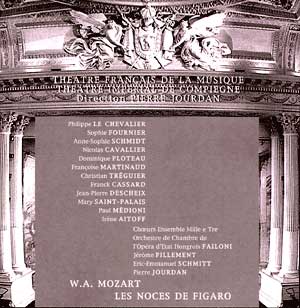 Composer: Joseph Guy-Ropartz
Composer: Joseph Guy-Ropartz
Works: Ouverture, Variations et Final (1914); Musiques au Jardin (1920); Nocturne No. 3 (1922)
Performers: Francoise Thinat (piano)
Recording: Arion ARN 68184, recorded 1983
Label: Arion
The oeuvre of Joseph Guy-Ropartz, a pivotal yet often overshadowed figure of early 20th-century French music, is brought to life in this compelling recording by Francoise Thinat. His compositions, particularly the Ouverture, Variations et Final and Musiques au Jardin, reveal a synthesis of late Romantic fervor intertwined with the burgeoning modernist sensibilities of the time. Composed during a period marked by both artistic exploration and the looming specter of war, these works encapsulate the essence of a composer straddling two worlds—the lush emotional landscapes of the 19th century and the nascent currents of 20th-century musical thought.
Thinat’s interpretation of the Ouverture, Variations et Final is noteworthy for its dynamic contrasts and nuanced phrasing. The work unfolds with a grandeur that suggests symphonic ambition, its three-part structure inviting comparisons to the sonata form without explicitly adhering to its conventions. The opening Ouverture establishes a rich, bardic character reminiscent of Ropartz’s Breton heritage, with Thinat’s touch evoking the shadowy depths of Celtic myth. The subsequent Variations reveal a kaleidoscope of colors, each transformation marked by a delicate balance of power and lyricism. Notably, the final section culminates in a fervent assertion of thematic material that resonates with a late Romantic intensity while hinting at the more dissonant textures that would soon emerge in the musical landscape.
Transitioning to Musiques au Jardin, the recording captures Ropartz’s shift towards more intimate expression. Here, Thinat’s approach is characterized by a reflective delicacy, perfectly suited to the suite’s impressionistic vignettes. The movement titles themselves—ranging from the serene “Prélude matinal” to the evocative “Le jardin au crépuscule”—suggest a painterly quality, and Thinat deftly navigates these moods with a refined sensibility. Each piece, though not flowing in the traditional sense, offers a glimpse into a world of nostalgia and reverie, reminiscent of a more subdued Schumann. The rhythmic subtleties in “Un enfant joue” are particularly striking, as Thinat captures the fleeting joy of childhood with both grace and poignancy.
The recording quality merits attention as well. The sound is warm and proximity-focused, allowing Thinat’s nuanced touch to shine without veering into the realm of suffocation—an all-too-common pitfall in recordings of this vintage. The clarity of the piano, coupled with a natural reverberation, enhances the listener’s experience, drawing them into the intimate atmosphere of Ropartz’s musical garden. Although this disc lacks the inclusion of Ropartz’s other Nocturnes, which could have provided further context and depth, the existing selections stand robustly on their own, illuminating the composer’s diverse palette.
Thinat’s interpretation, paired with the recording’s quality, invites renewed consideration of Ropartz’s legacy within the broader canon of French music. His voice, while not as widely celebrated as that of Debussy or Ravel, offers a unique lens through which to view the evolution of early 20th-century aesthetics. The album serves as a crucial reminder of the rich tapestry of compositions that lie beyond the most frequently performed repertoire. As we embrace this treasure trove of French music, one hopes for future explorations of lesser-known figures like Ropartz, who deserve to be revisited and celebrated. This recording is a commendable contribution to that ongoing journey.



